You can use a blanket or quilt as an extra layer over your comforter in the colder months, or as a cover-up on their own in the warmer months. Sizes range from crib to king, so there’s something for everyone. If you’re looking for the right type of blanket or quilt, but aren’t sure what size you need, and what type of blanket is best for you then this is the guide for you.
Blanket Sizes


When shopping for a bed blanket for your house, you can save the guesswork thanks to the fact that conventional sizes are based on mattress dimensions. Nonetheless, there are specifics to bear in mind while you shop, such as the blanket’s exact proportions and the size and depth of your mattress.
Sizes Of Standard Bed Blankets
Twin, double/full, queen, and king are the common sizes for bed blankets types. Blanket sizes range from 66 to 108 inches, with twin blankets measuring 66 by 90 inches, full or double blankets 80 by 90 inches, queen blankets 90 by 100 inches, and king blankets 108 by 100 inches. These are averages, and different brands of blankets may have a bit more or less room in certain areas.
The standard size of a comforter can vary slightly from brand to brand. Comforters, unlike blankets, are stuffed with a softer material like down between two layers of cloth.
The normal dimensions of a comforter are as follows: twin, 68″ x 86″, full/double, 80″ x 90″, queen, 86″ x 94″, and king, 110″ x 96″.
-
Blankets/Quilts For Babies


Most baby blankets are about 34″ wide and 36″ long, but the size can vary. Most of the time, these blanket types are made for babies who are a few months old. Blankets for newborns are usually smaller. Crib blankets are bigger than regular baby blankets, so make sure you measure your crib’s bedding size before you buy a blanket.
-
Twin/Twin XL–Size Blankets


Most blankets and quilts that are Twin/Twin XL size are 66″ wide and 90″ long. The size of a twin mattress is 38″ wide and 75″ long. A twin XL mattress is 38″ wide and 80″ long, which is only 5″ longer than a twin mattress. These types of blankets are 90″ long, so they can fit both a twin bed and a twin XL bed. This size is also great for watching TV while cuddled up on the couch.
-
Full/Double-Size Blankets
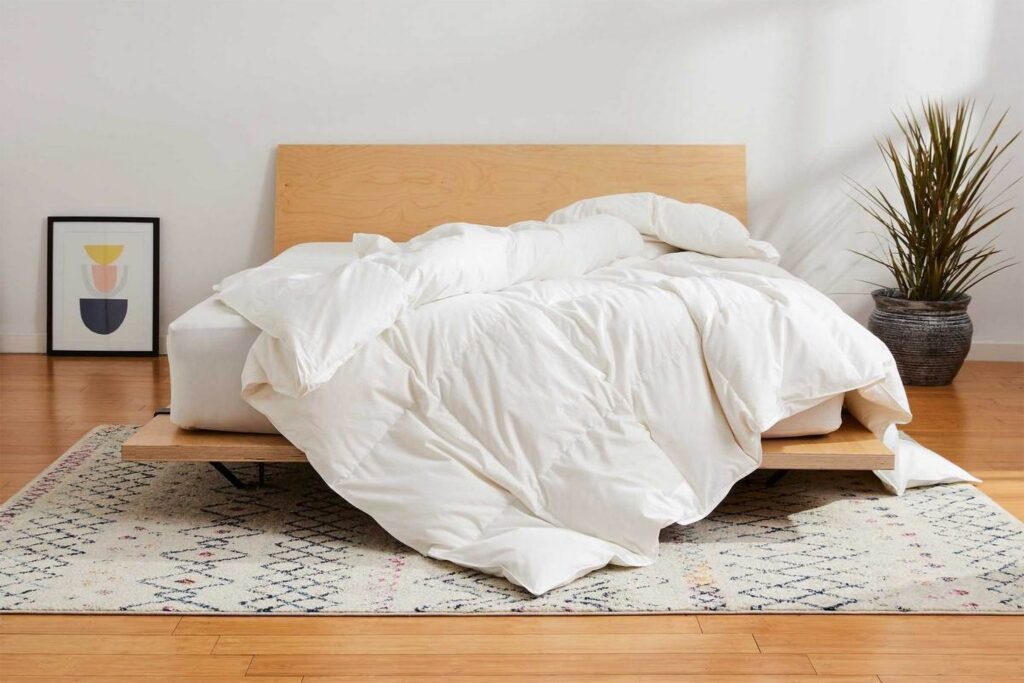

Full/double mattresses are 54″ wide and 75″ long, and blankets and quilts are 80″ wide and 90″ long. Remember that a double mattress is shorter and narrower than a queen mattress, so a double-size blanket is not the best choice for a queen mattress.
-
Queen-Size Blankets
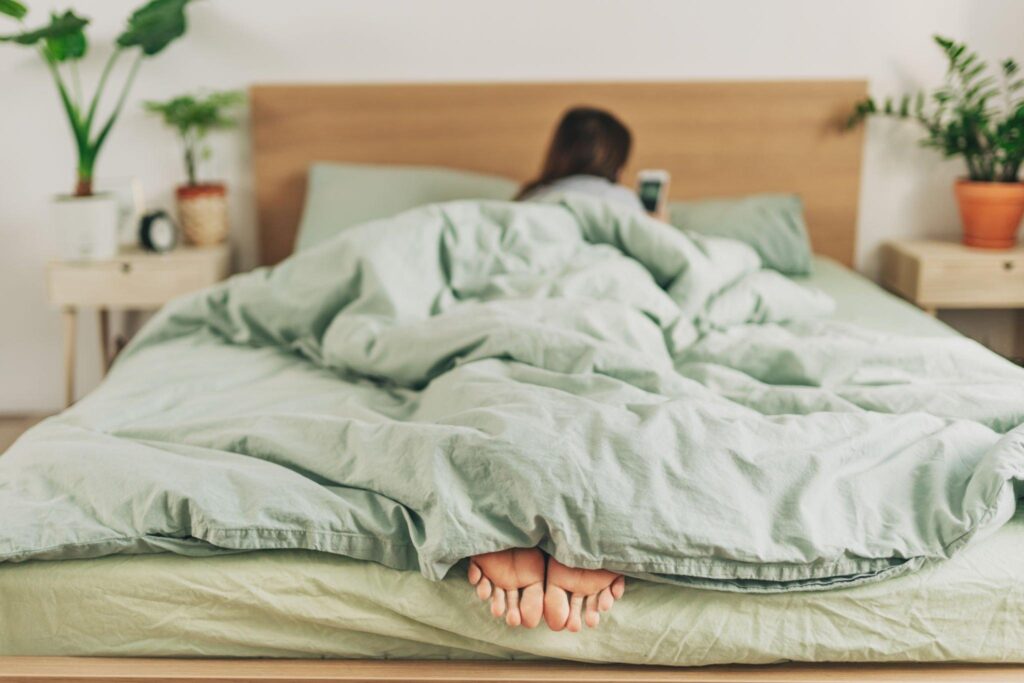

Queen mattresses are 60″ wide and 80″ long, which is about 5″ longer and wider than full/double mattresses. Queen-size blankets are 90″ wide and 90″ to 100″ long. If you have a mattress that is very deep, you should choose a larger blanket.
-
King-Size Blankets
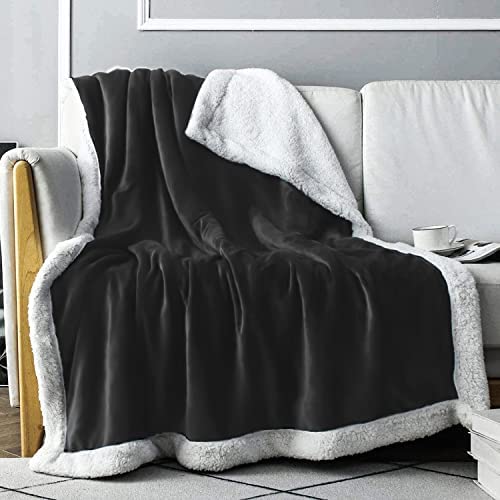

A king-size bed is 76″ wide and 80″ long. Like queen-size blankets, king-size blankets are 108″ wide and can be 90″ to 100″ long.
-
California King–Size Blankets
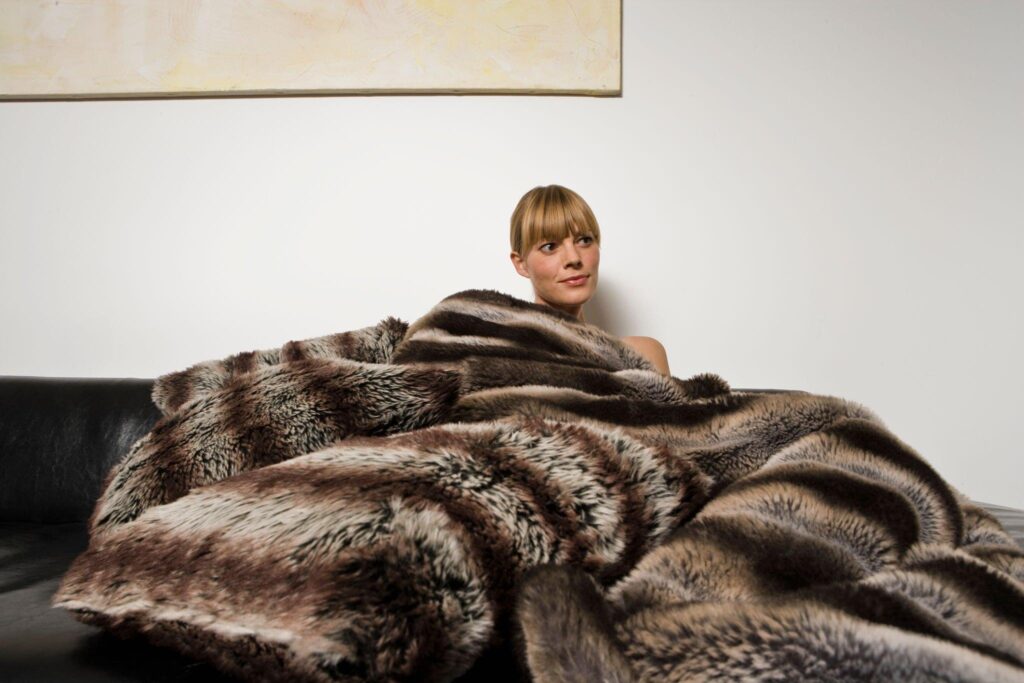

A California king mattress is 72″ wide and 84″ long, which is a bit shorter and narrower than a standard king size mattress. Even though this may not seem like a big deal, we recommend getting a blanket that is made for this mattress. A blanket for a California king is 104″ wide and 108″ long.
What Are Blankets Made Of And Different Types Of Blankets
It’s easy to assume that any old blanket will do the trick, but there’s actually more depth to finding the perfect blanket for your needs.
Different types of blankets material, such as cotton, acrylic, bamboo, duvets, quilts, and everything in between, each serve a unique purpose in creating a warm and welcoming bed. These are some of the most popular blanket material types:
-
Cotton Blankets
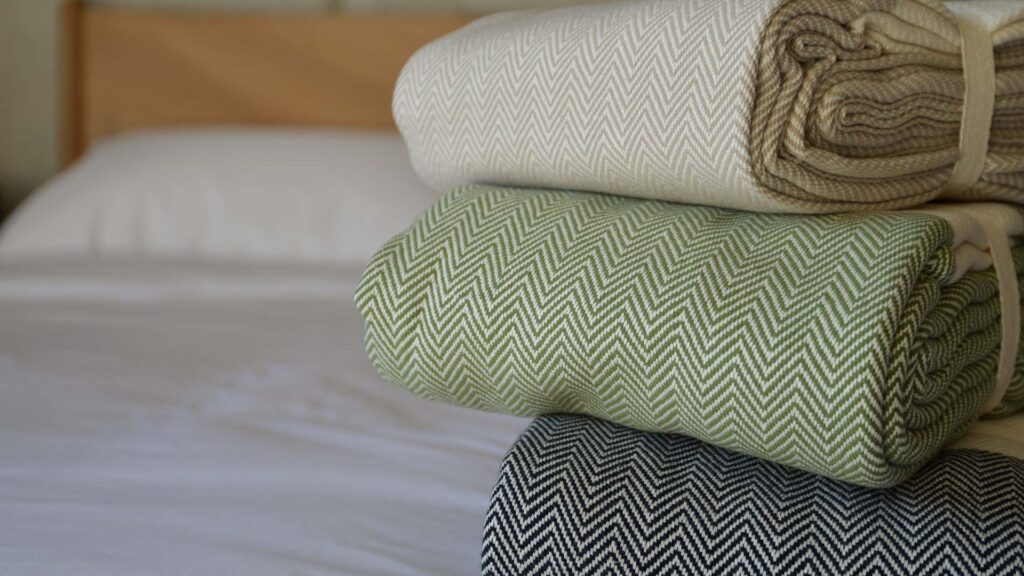

These types of blanket material are good for people with sensitive skin or allergies because they do not cause allergies. Cotton is a material that is thought to breathe well and makes a good blanket for warmer weather. Most cotton blankets are simple to wash.
Also, they are very comfortable, but there are some problems with them. When wet, they can be heavy and take a long time to dry out. They can also catch fire. They are not good choices for camping because of these things.
-
Afghan Blankets


Some people may say that a blanket is not the same as an Afghan, but the differences are not that clear. If you think of a blanket as a covering to keep you warm, then an Afghan would be a blanket.
An Afghan blanket is usually crocheted or knitted from wool. It is sometimes made of linen, cotton, or other natural fibers. Afghan blankets come in a lot of different styles, such as single piece and mile-a-minute.
The strips for the mile-a-minute blankets are made separately and then sewn together. Afghans with motifs can also be made with blocks or granny squares.
-
Acrylic Blankets
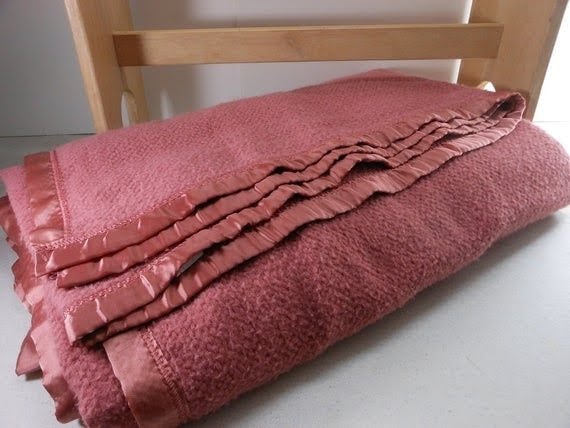

Woven acrylic is made of man-made materials, not natural ones like wool or cotton. Most of the time, this types of blanket materials is thin but still warm. These kinds of blankets won’t get moth holes and can be kept for a long time. Acrylic often feels and looks like wool.
They don’t let much air in, but that’s one reason why they keep heat well. Also, they can be washed and dried many times without getting too worn out.
There are several bad things about having an acrylic blanket. Very cold or very hot water can damage acrylic fibers. The best way to clean it is with warm water. Acrylic fabrics for blankets are bad for the environment and may even cause some kinds of cancer. Acrylic blankets with a satin edge have been one of the most popular kinds for years.
-
Bamboo Blankets
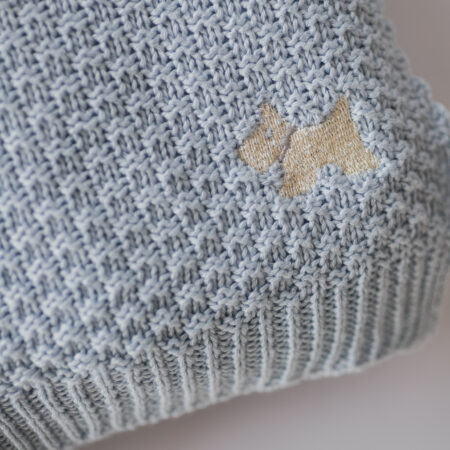

Bamboo is a grass that grows quickly and is as tough as the softer part of a hardwood tree like an oak. Bamboo fibers are now used to make blankets, which have the best qualities of many other fibers, such as being hypoallergenic, eco-friendly, and breathable.
Bamboo textile blankets can be a little more expensive than those made from synthetic or more common materials, but that hasn’t stopped them from becoming more popular.
-
Car Blankets


You can plug these kinds of electric blankets into a cigarette lighter or a 12-volt outlet. They are similar to electric blankets that people use at home, except that they are made for use in cars. They are usually made of polyester or fleece and have a number of different parts.
Some of the fancier ones will have a range of temperature settings, an automatic shut-off, and lights that show when the fan is on or off. Some can be washed in a washing machine, but most are made so that they can only be washed safely by hand.
-
Chenille Blankets
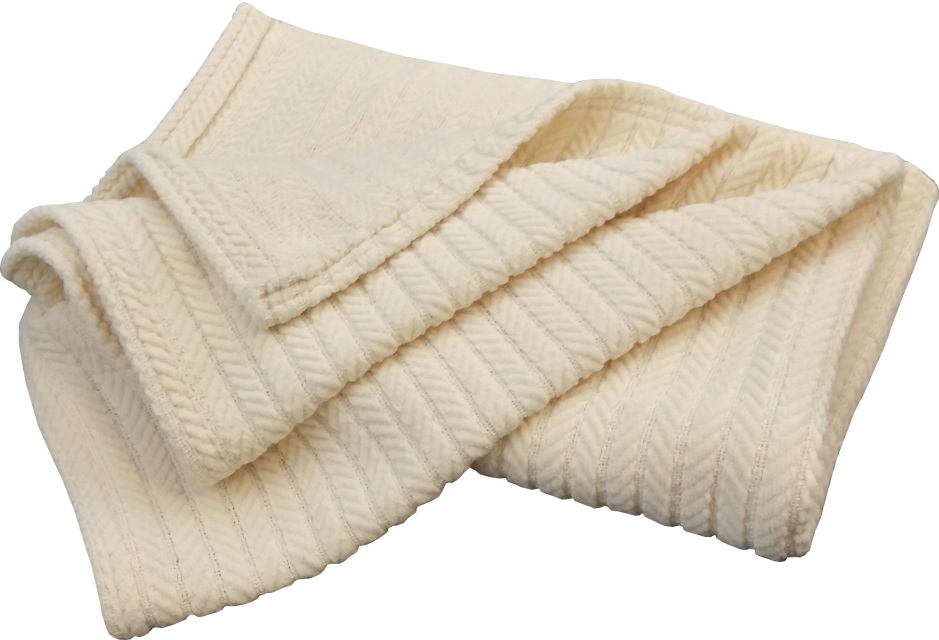

If you want the softest types of blanket possible, you should get one made of chenille. Chenille is sometimes made entirely of cotton, but it can also be made of rayon or acrylic.
The fabric for a chenille blanket is then made by wrapping yarn tightly around a core. This makes the fabric’s edges stick out at right angles. This is what gives chenille its soft texture and distinctive look.
Some chenille blankets can be washed and cared for easily, while others may need to be dry cleaned. How to do it will depend on the materials used to make the blanket types. One of the biggest problems with chenille is that the blankets are usually expensive.
-
Down comforters
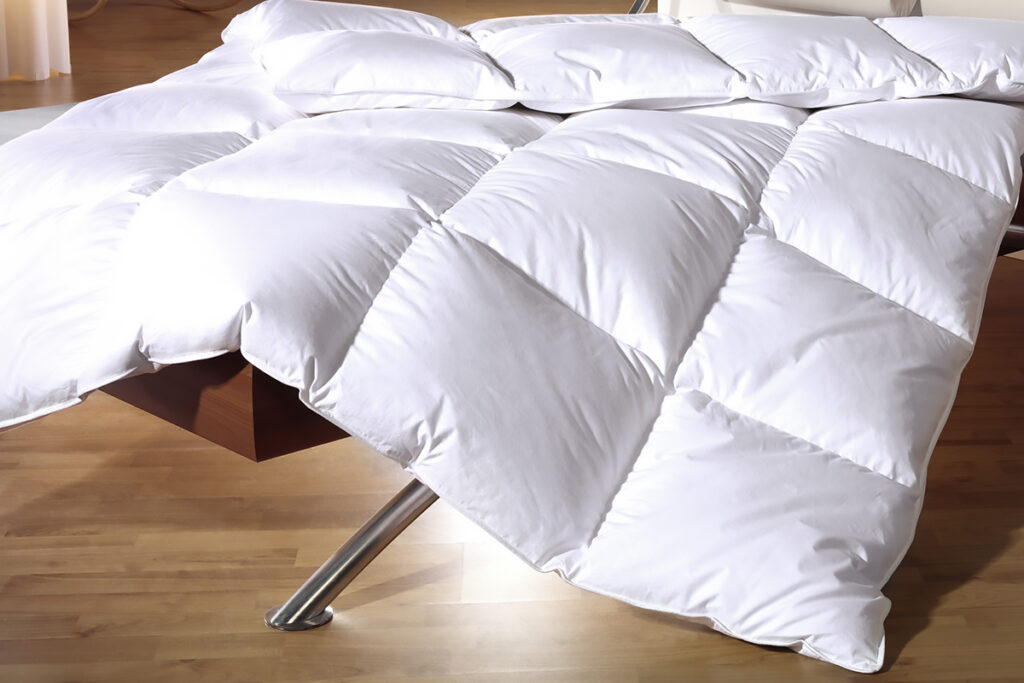

A down duvet is another name for a down comforter. It is usually filled with polyester, cotton, wool, or down, which are all good insulators.
Down is a type of fiber that adds a lot of warmth to both blankets and comforters. A down comforter is different from a down blanket. It’s not as heavy as a normal down comforter.
Most down blankets have light materials sandwiched between two different fabrics. Most of the time, down feathers are what’s inside a down comforter.
-
Duvet blankets
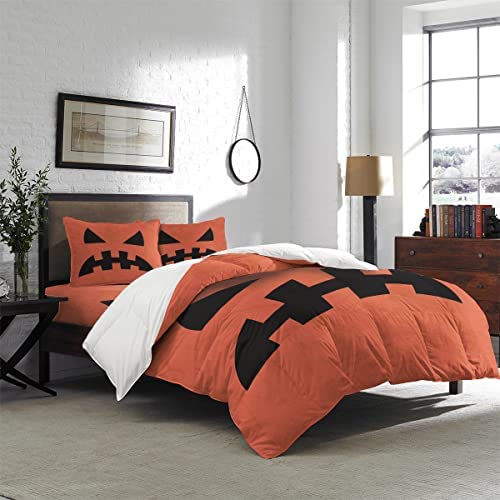

Duvet covers go on top of other blankets to protect them from accidental messes and give the room a finished look. You can use it as a blanket if you want to, especially on warmer nights because they are usually made out of lighter materials.
Since they are put on the outside on purpose, at least in part for decoration, a duvet cover can make your room look more beautiful.
-
Blankets With Wires
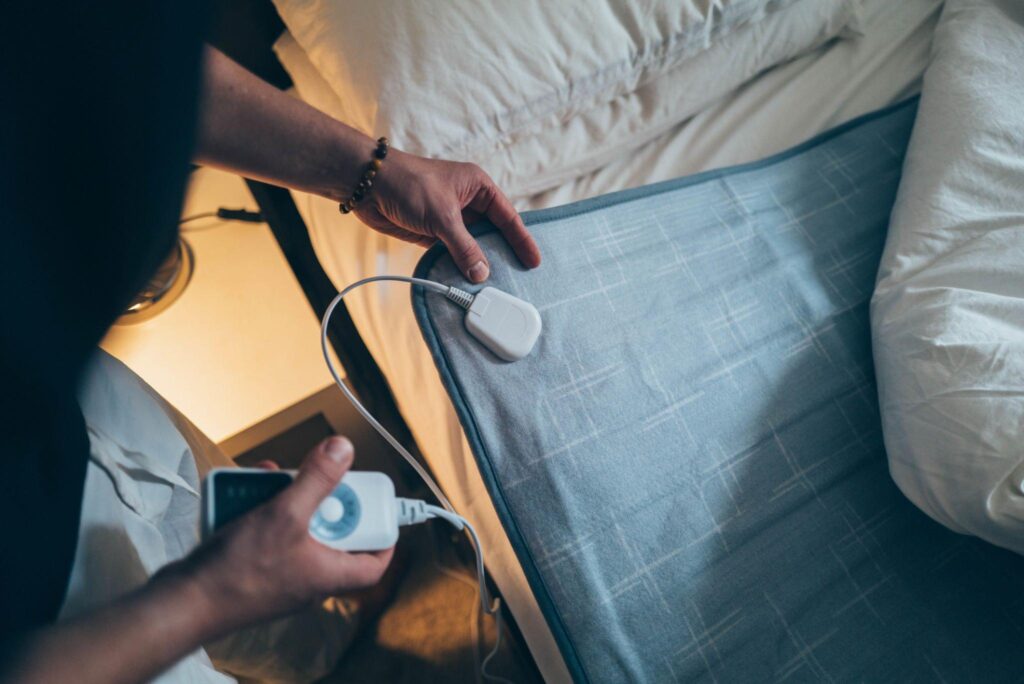

Electric heating elements can be put inside a blanket to make it warmer. They can warm you up faster than a similar blanket that doesn’t have heating, but you’ll need an electrical outlet nearby to use them. When a winter storm knocks out the power, the electric blanket won’t work as well.
-
Emergency Blankets


They are also called space blankets or Mylar blankets. These blankets are light and have a shiny surface on the outside. People use emergency blankets to keep their bodies from losing too much heat.
They are often used by campers, and some first-aid kits have them. The simplest emergency blanket is a thin metal sheet that can be folded up and stored in a small space.
Most radiant heat, not just heat from a person, is reflected by these blankets. They can also be used as a place to get out of the heat or to call for help.
-
Faux Fur Blankets
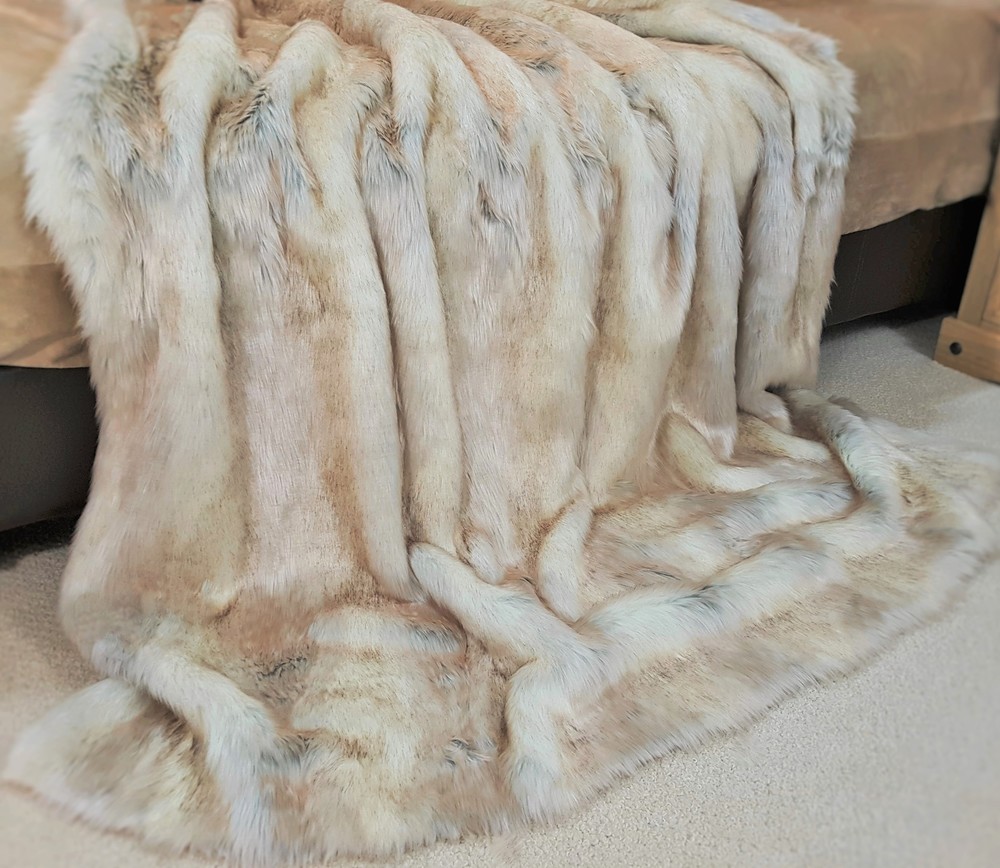

A faux fur blanket looks and feels like a real fur blanket. There are stores that sell fur that comes from a responsible source, but today’s fake fur looks very much like the real thing. It feels like you’re cuddling up with a bear that won’t try to eat you because it’s so soft and warm.
-
Fleece Blankets


Most fleece blankets are made of polyester or a mix of polyester and other man-made fabrics. Fleece is usually warm, light, and easy to clean at home.
Fleece is a good choice for people who have sensitive skin or allergies but still want a warm blanket. Most of the time, fleece blankets cost less than other kinds.
-
Knit Blankets
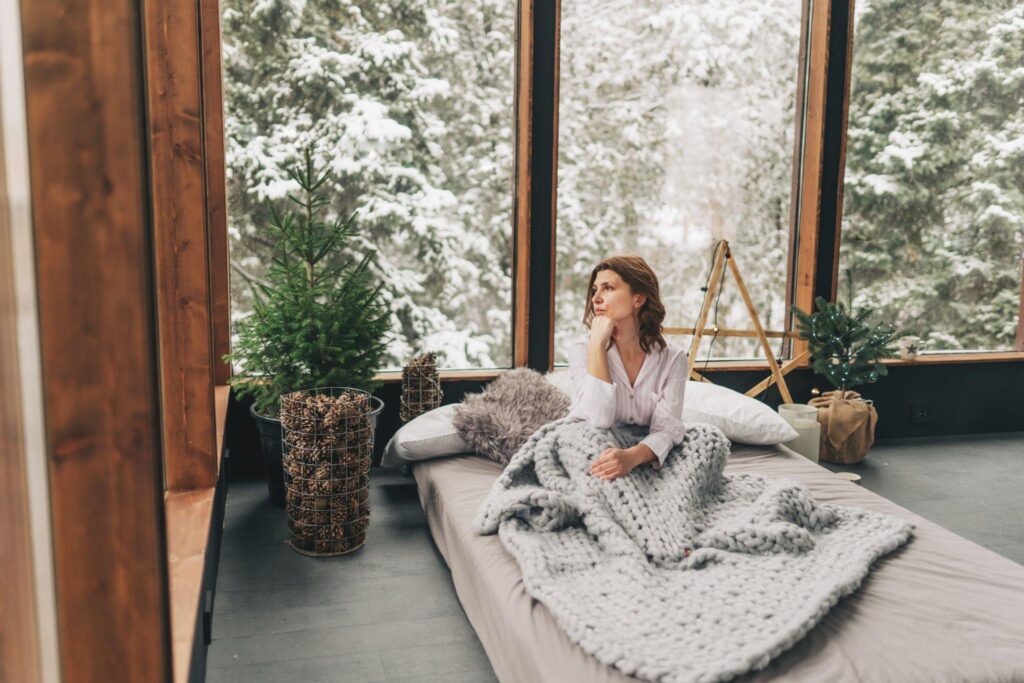

The traditional wool blanket fabric types that are knitted are especially soft and warm. Today, you can buy both machine-knitted and hand-knitted blankets, and it’s not too expensive or hard to teach yourself how to hand-knit.
The thickness of the yarn can change the feel of a blanket just as much as the type of material.
-
Linen Blankets
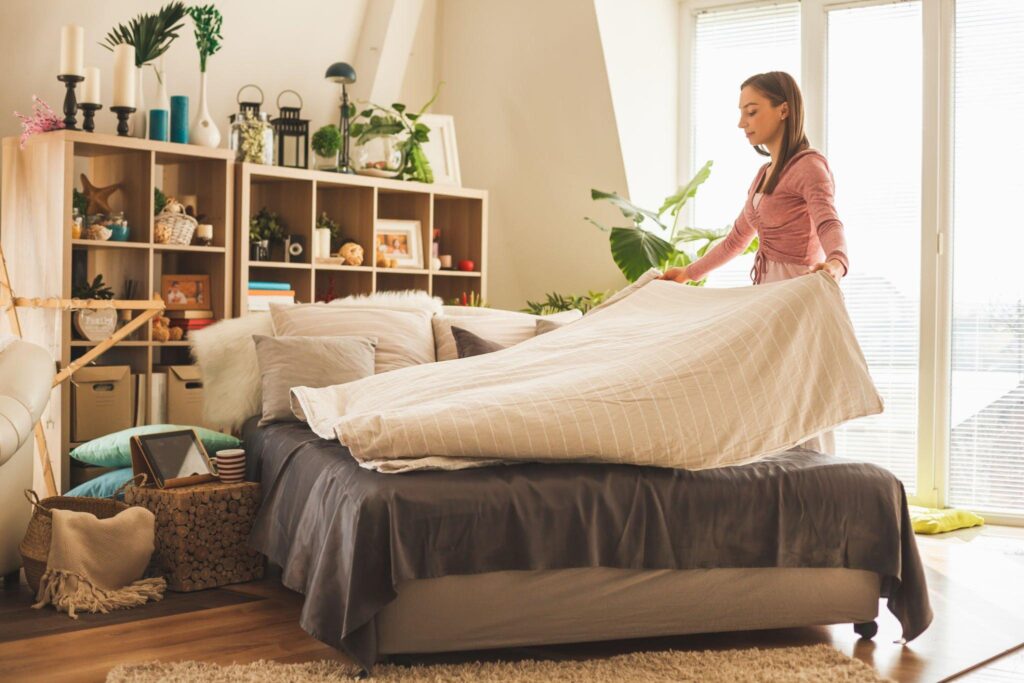

Flax plants make the fibers that are used to make linen. It can be hard to gather this kind of fiber. This is one reason why almost everything made of linen, like blankets, costs so much.
Linen is easy to clean and better for the environment than many other materials. Linen is a heavy fabric that will last longer than many others.
A linen blanket is easy to adjust to the temperature of the person using it. This blanket fabric types keep a person cooler in the summer and warmer in the winter, making them great for all seasons. Linen wrinkles easily, so it should be hung out to dry after being washed to keep it from pilling.
-
Microfiber Blankets


A microfiber blanket is made of different kinds of fibers all put together. Often, polyester, rayon, and nylon are among these. Most of the time, a microfiber is a very finely woven polyester.
Most things made of microfiber don’t get wrinkles. Dust can’t get in between the fibers of this type of blanket because the material is woven together so tightly.
People with allergies can choose it because of this. It also doesn’t get dirty easily and lasts a long time. But at high temperatures, it can melt. This kind of blanket is good for many outdoor activities, but you shouldn’t use it near a fire.
-
Nylon Blankets


Blankets that are mostly made of nylon will be strong and last a long time. Nylon is a type of man-made fiber that has been used to make toothbrushes, stockings, umbrellas, and blankets, among other things. This kind of blanket can be used in very cold or very hot weather and still hold up well. To keep a nylon blanket in good shape, you should wash it with cold water.
-
Polyester Blankets
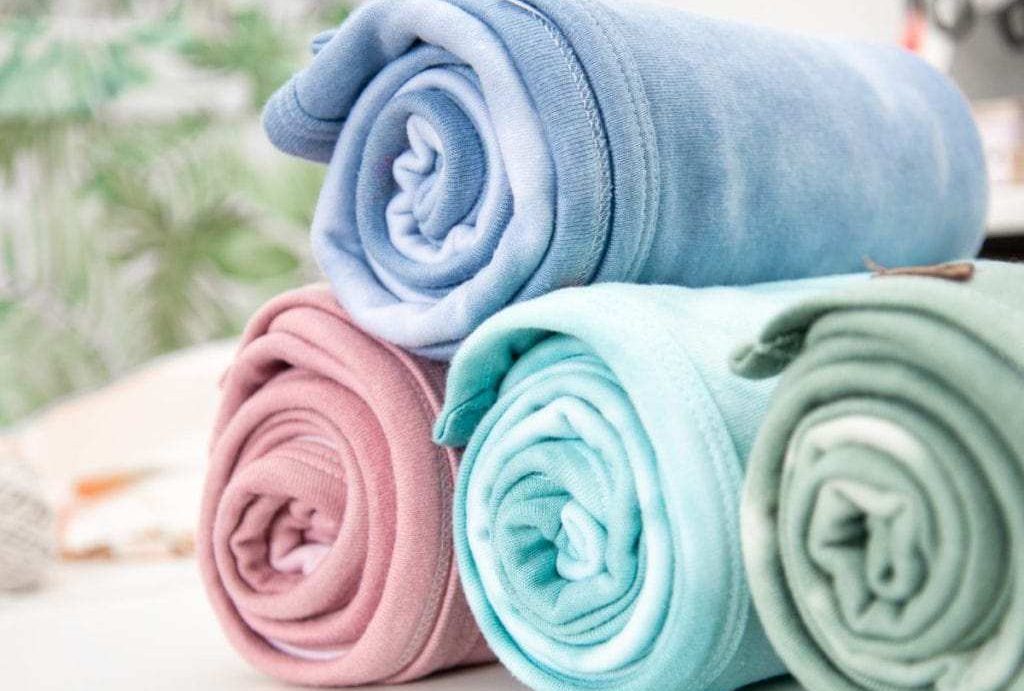

Several of the blankets we’ve already talked about are made with at least some polyester. One of the best things about a blanket made mostly of polyester is that you can wash and dry it many times and it will still keep its shape and color.
Blends of polyester and cotton are popular because they make blankets that are both strong and soft. There are some bad things about polyester. It sticks to skin when it gets wet and doesn’t breathe as well as cotton.
-
Quilts


Quilted blankets are made by putting two layers of fabric on either side of a fluffy filler. Most of them aren’t as big as a fully stuffed down comforter, but they are warm and light enough for people who get too warm at night.
Like knitted blankets, quilted blankets are made with simple techniques that anyone can learn. This means you can make your own quilted blankets at home.
-
Sherpa Blankets


A Sherpa blanket is a fluffy fleece cover that does a great job of keeping in heat without being so heavy that it keeps you from moving. Sherpa jackets are also made of the same materials and have the same features if you want to bring warmth with you wherever you go.
The fluffy parts of the blanket can get matted over time, so keep a brush blanket nearby to keep the same level of comfort.
-
Throw Blankets
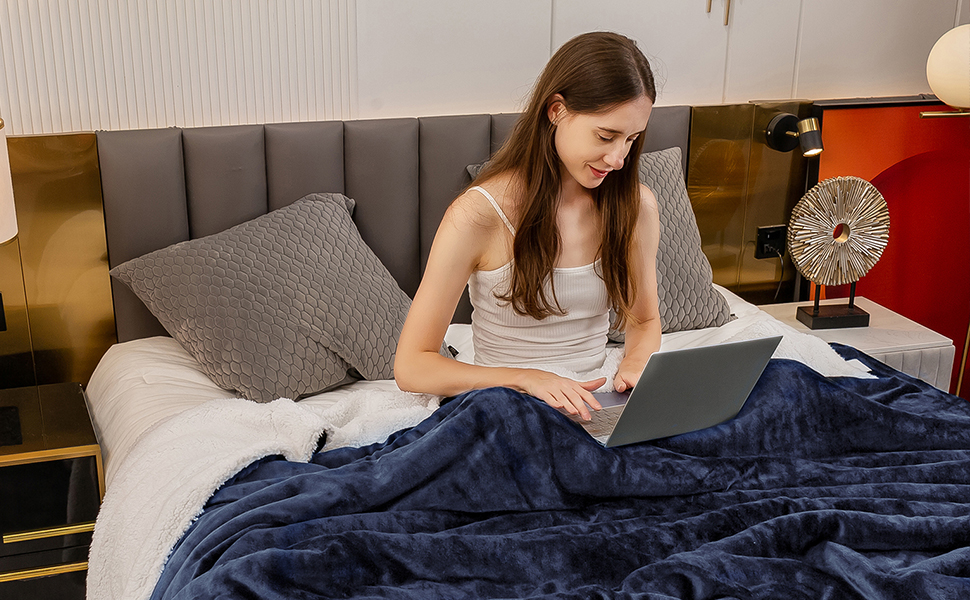

Throw blankets are smaller, so when they are folded or not in use, they take up less space. On a cold day, a couple of throw blankets in cozy spots can add a bit of warmth.
Like a duvet cover, some throw blankets can also be used as décor. Throw blankets don’t have to be made of a certain material, so you can look for them in whatever material you like.
-
Vellux Blankets


You might also call these “hotel blankets.” Most of the time, they are made of nylon and foam. Sometimes, though, they are made of polyester and nothing else.
These blankets are very warm and will last a long time. Most of the time, they have two layers of foam between two layers of strong nylon fiber fabric. They can be washed a lot without getting worn down much.
Most Vellux blankets don’t bother people with allergies because they don’t pill. One of the best things about a vellux blanket is that it’s likely to last for a long time. Some owners say their blankets have lasted as long as 30 years.
-
Waffle Weave Blankets
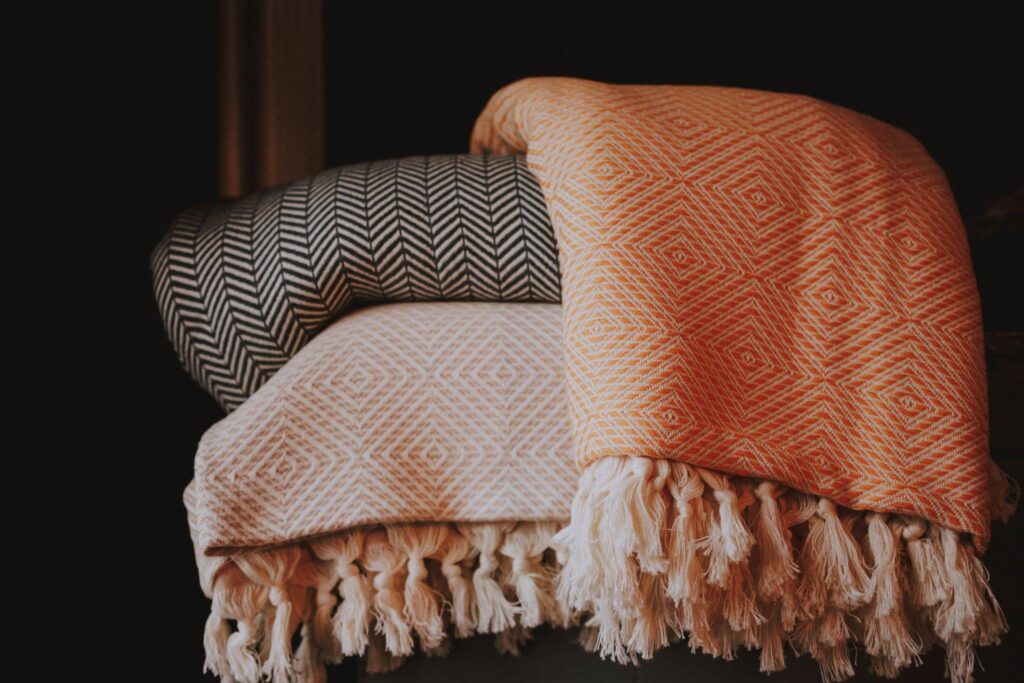

Waffle weaves leave holes in the fabric on purpose so that the blanket can breathe better. If you get hot at night but love blankets, the airy gaps can help you get a good night’s sleep.
The obvious downside is that it doesn’t keep as much heat in when it’s really cold, but putting a solid but light blanket on top of the waffle weave can fix this.
-
Blankets With Weights
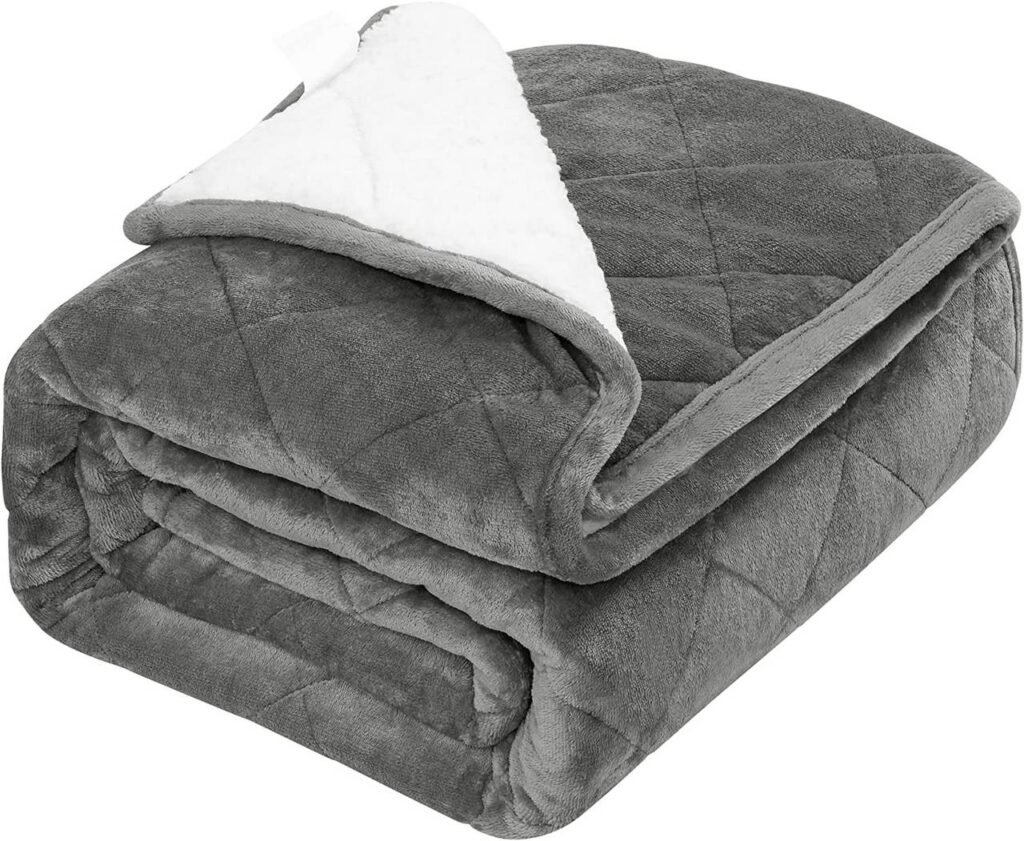

Weighted blankets, as their name suggests, are made of heavier materials that put more pressure on you when you burrow under them. People who swear by weighted blankets often say that the extra weight helps them fall asleep faster and sleep better.
For some, they can be too hot and make it hard to breathe. Since they can be on the pricey side for blankets, it helps to try one out first to see if it works for you.
-
Wool Blankets


Wool blankets probably keep you the warmest out of all natural materials.
Wool is resistant to fire by nature. Remodelista says that there are a few other good things about having a wool blanket. Wool breaks down on its own, which is good for the environment.
Wool is also antibacterial and doesn’t provide a good place for germs to grow. It doesn’t need to be washed as often because it kills germs.
-
Mink Blankets


These aren’t made from animal mink, but from acrylic instead. They are called “mink” because of how soft they are. They are soft, thick, and very comfortable, but they are also very light. There are a lot of beautiful colors and styles of these blankets to choose from.
-
Coverlet


A coverlet is a light blanket that is often mistaken for a quilt or bedspread. It can be used for two main things. This thin layer is often put between the flat sheet and the duvet cover to add warmth and comfort. Since a coverlet is supposed to be light, it is usually made out of cotton or silk blanket material.
- Related : VALUE-DRIVEN CLOTHING MANUFACTURERS IN THE UK
- Related : Some Background On The Evolution Of Different Types Of Leggings
- Related : 45 Different Types Of Jeans: Do You Have a Favorite




